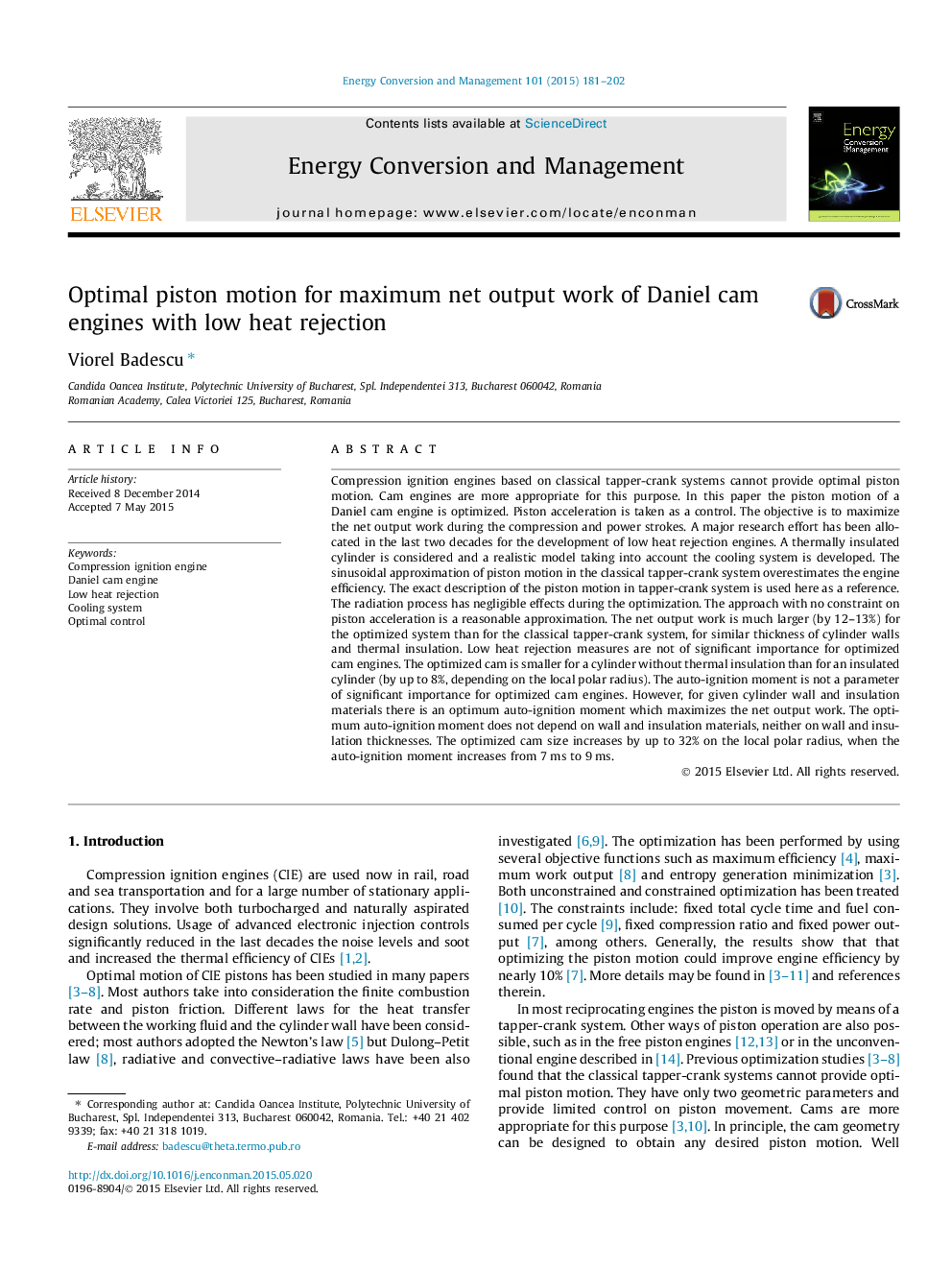| Article ID | Journal | Published Year | Pages | File Type |
|---|---|---|---|---|
| 7162468 | Energy Conversion and Management | 2015 | 22 Pages |
Abstract
Compression ignition engines based on classical tapper-crank systems cannot provide optimal piston motion. Cam engines are more appropriate for this purpose. In this paper the piston motion of a Daniel cam engine is optimized. Piston acceleration is taken as a control. The objective is to maximize the net output work during the compression and power strokes. A major research effort has been allocated in the last two decades for the development of low heat rejection engines. A thermally insulated cylinder is considered and a realistic model taking into account the cooling system is developed. The sinusoidal approximation of piston motion in the classical tapper-crank system overestimates the engine efficiency. The exact description of the piston motion in tapper-crank system is used here as a reference. The radiation process has negligible effects during the optimization. The approach with no constraint on piston acceleration is a reasonable approximation. The net output work is much larger (by 12-13%) for the optimized system than for the classical tapper-crank system, for similar thickness of cylinder walls and thermal insulation. Low heat rejection measures are not of significant importance for optimized cam engines. The optimized cam is smaller for a cylinder without thermal insulation than for an insulated cylinder (by up to 8%, depending on the local polar radius). The auto-ignition moment is not a parameter of significant importance for optimized cam engines. However, for given cylinder wall and insulation materials there is an optimum auto-ignition moment which maximizes the net output work. The optimum auto-ignition moment does not depend on wall and insulation materials, neither on wall and insulation thicknesses. The optimized cam size increases by up to 32% on the local polar radius, when the auto-ignition moment increases from 7Â ms to 9Â ms.
Related Topics
Physical Sciences and Engineering
Energy
Energy (General)
Authors
Viorel Badescu,
